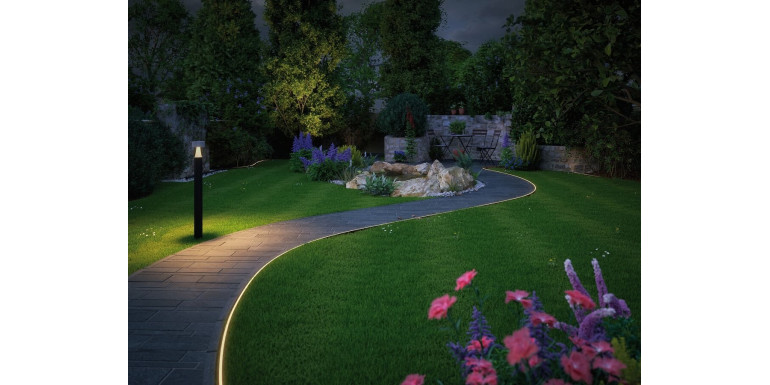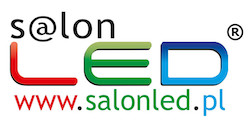-
How to choose the right light color in track lighting? 12/01/2025 14:46:21What is indirect light and why is it fashionable? 11/19/2025 18:37:52Track lighting in the bathroom – is it worth choosing? 11/14/2025 14:54:19Outdoor and garden lighting02/12/2019 22:27:22

Outdoor lighting, apart from the fulfillment of obvious practical functions, is also an extremely important decorative element that adorns both the building itself and its surroundings. Thanks to well-chosen lighting, it is possible to highlight the beauty of the object or the adjacent area, including the garden. The external lighting system should be included in the project. It should be considered which parts of the building or garden will be the most frequented by us, and which we want to specifically expose with the help of light. Implementation of the layout plan of light elements is already taking place at the stage of installing electrical installations. Exterior lighting design When preparing the design of the outdoor lighting system, one should pay attention to several important issues, such as terrain, shape and size of the building, its shape, planting, and the height and type of the fence used. To all these conditions, the most optimal lighting should be selected, deciding on a particular type of lamps, their color, the direction of incidence of light beams and the type of luminaires used.
Outdoor lamps and their assembly In the choice of lamps, we should be guided by the style of the building, so that both the property and the lighting elements create a coherent whole. Let's decide on lamps from one series, not to introduce an atmosphere of chaos. When choosing elements of an external lighting system, it is also necessary to consider how to assemble them. We can choose standing lamps, ideal for lighting pavements, paths in the garden and garage entrances. They require a solid, durable substrate, such as a flagstone or paving stones. Many external lamps are attached directly to the wall. These include, among others, plafonds and elegant LED exterior wall lamps. They are suitable for lighting terraces, balconies, but also gates, stairs or porches. A separate group consists of LED recessed lamps mounted on vertical surfaces, such as walls, stairs or walls, but requiring cavities in these planes. They allow lighting to enter stairs or paths. With their help you can also functionally and impressively decorate the driveway to the garage. LED exterior lamps can also be successfully installed in hoods, but attention should be paid to the speed of their heating. Such elements are used to decorate and illuminate the entrance to the house or garage. The next type are LED recessed lamps, placed in pavements, among others in paving stones or pavements. They are used to illuminate paths, patios or other flat surfaces. With the help of elements with low light intensity, you can also display specific points, including plants or garden decorations. For the owners of the ponds, special external lamps are recommended, allowing the lighting of this garden decoration. Lamps for eyelets are available in many types. They can be floating elements, immersed in water or mounted on the edge of a pond
Light bulbs and light color Choosing a type of light bulbs, we can opt for halogen bulbs, compact fluorescent lamps or LED diodes. We must also pay attention to the color of the light emitted. Traditional bulbs usually give warm yellow light. Compact fluorescent lamps have a slightly cooler color. In turn, halogens emit light that is closest to the natural one. LED diodes allow us to obtain many colors of light, from yellow, through all shades of white and additionally RGB. Power supply of the external lighting system An important element in the design of the outdoor lighting system is to choose the method of its supply. It should be considered at the stage of designing the electrical installation system. If we have not done so and we do not want to run additional cabling in the finished building, choose solar lamps. The light emitted by them is not as strong as in the case of electric lamps, but it allows to obtain a delicate and subtle effect, which also very aesthetically decorates the object and its immediate surroundings. Controlling the lighting system To make the external lighting system even more functional, it is worth considering the issue of controlling it in advance. The easiest solution is to turn off the lamps with a simple switch. Unfortunately, it is not an economic or convenient option. It is more convenient to use an automatic controller that allows the system or its individual elements to be switched on and off depending on our needs. The controller can be equipped with a timer or motion sensor. A comprehensive approach to the design of the external lighting of the building and its surroundings allows us to create a system adequate to the needs of users, as well as matching the style and character of the object.
Menu
- +Outdoor lighting
- +Indoor lighting
- +Wall LED lamps
- Line light LED
- LED profiles ALU
- +Track system
- +LED ceiling lamps, hanging and surface-mounted
- +Ceiling covers
- Starry Sky
- +LED plafonds
- Floor LED eyes, LED halogens
- +Hanging lamps LED
- Ceiling spotlights and spots
- Ceiling fans LED
- LED lights for paintings
- +LED floor lamps
- LED table and desk lamps
- Living room
- Bedroom
- Dining room
- LED bathroom lighting
- LED kitchen lighting
- LED stairs lighting
- +LED bulbs
- All manufacturers
- Prices drop
- New Products
- Bestseller




